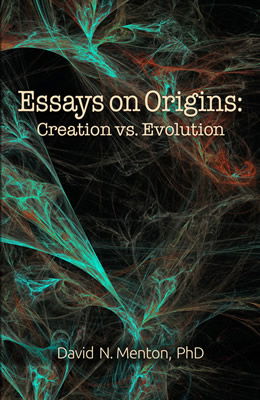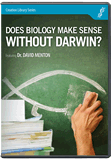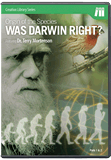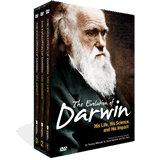
Species, Speciation, and the Genesis Kind
Editor’s Note: First published in St. Louis MetroVoice 4, no. 10 (October 1994).
In his “table talks,” Martin Luther spoke of the Greek scholar Cicero’s proof for the existence of God:
The best argument that there is a God—and it often moved me deeply—is this one that he proves from generation of species; a cow always bears a cow, a horse always bears a horse, etc. No cow gives birth to a horse, no horse gives birth to a cow, no goldfinch produces a siskin. Therefore it is necessary to conclude that there is something that directs everything thus (Luther’s Works, 1967, Fortress Press, p. 423).
As obvious as this principle of “like begets like” is in terms of common experience, a central tenet of Darwinism is that in the course of time, things are very different. Evolutionists seek to account for the origin of all species (past and present) from a single, hypothetical, primordial life-form by means of progressive change and natural selection.
Many think that Darwin solved the problem of speciation (development of new species) with the publication of his book On the Origin of Species. In fact, Darwin didn’t really deal with the subject, much less explain it. This failure to address what was seemingly the central issue of his study stemmed from the fact that Darwin, like many of the other English “transformationists” of his time, did not really recognize the species as a distinct and real category of organisms. Rather, he extrapolated the continuous (but limited) variation he saw among pigeons, finches, dogs, etc., into a limitless and seamless continuum among all organisms.
There were essentially two schools of biology in the 19th century, which we might call the “typological” or German school, and the “populational” or British school. Most of the great German (and French) biologists of this time viewed the species as a true type in nature. Many British biologists, on the other hand, focused on the variation among individuals within a species, and viewed the species as nothing more than a statistical average of the population. This, in turn, led many to conclude that the entire system of classification of organisms was merely an arbitrary pattern imposed on what was in reality a continuum. It is not surprising then that the concept of evolution grew out of the British School, while many German and French naturalists were among Darwin’s strongest critics.
The first problem in discussing the origin of species is to define just what we mean by a species.
The first problem in discussing the origin of species is to define just what we mean by a species. Complicating the definition of a species is the use in scientific literature of terms such as sibling species, subspecies,and semispecies. Until nearly the latter half of the 20th century, a species was considered to be any systematic unit classified as a species by a competent systematist. More often than not, an animal’s anatomy (rather than its ability to interbreed) was considered the primary determinant of a species. As a result of this approach, ten interbreeding varieties of red foxes were once divided into ten separate “species” merely on the basis of their color and geographical distribution. The red foxes are now considered to represent one species (Vulpes fulva) comprising 12 “subspecies.” The southern pocket gopher has 214 such subspecies! Subspecies then is simply another name for what has long been known as a variety.
The modern definition of a species tends to ignore anatomical differences or similarities and focuses almost entirely on whether or not a natural population interbreeds. The evolutionist Francisco Ayala has defined a species as “groups of interbreeding natural populations that are reproductively isolated from other such groups.” By this widely accepted definition, two geographically separated organisms could be almost indistinguishable (and capable of interbreeding in the laboratory) yet be considered two different “species” by reason of their failure to interbreed in nature. Such populations are often referred to as “sibling species.” By this definition of species, there are over 6,000 species of fruit flies in Hawaii alone!
Regrettably, the term species is not always used consistently today. The nearly 150 varieties of strikingly distinctive dog breeds recognized by the American Kennel Club are all considered to be members of the same species Canis familiaris, because they all can cross breed. Yet the gray wolf (Canis lupus) and the coyote (Canis latrans) are considered to be different species, though they too are known to interbreed with dogs. Creationists have long felt a need for a classification that would include in one consistent category all organisms that interbreed under any conditions.
The Bible employs the Hebrew word min 21 times in the Old Testament to speak of the different “kinds” of animals. In Genesis the created min were said to reproduce each after its own kind, suggesting strict reproductive limits. All birds, for example, are clearly not one min. In the 14th chapter of Deuteronomy we find a separate min applied respectively to the raven, the ostrich, the night-hawk, the sea gull, the hawk, the little owl, the great owl, the water hen, the pelican, the vulture, the cormorant, the stork, and the heron. The classification species as used today is clearly more limited than the Old Testament min.
Using the Biblical concept of classification, it would seem appropriate to include all true cattle of the genus Bos (seven different species) in one min since they all can interbreed. The Santa Gertrudis breed of cattle, for example, was developed by crossing Brahman bulls (Bos indicus) with shorthorn cows (Bos taurus). Even the African buffalo (Syncerus caffer) can be crossed with the American bison (Bison bison) and with other true cattle, suggesting that all of these animals, though representing different genus and species, could be considered to be of the “cattle kind” or min.
Animal species have never been observed to evolve into distinctively different species.
New species have been produced in plants through the process of hybridization. In 1881, for example, Judge J. L. Logan of California crossed a raspberry (Rubus idaeus) with a blackberry (Rubus allegheniensis) to produce the loganberry (Rubus loganobaccus). The loganberry breeds true, with no tendency to revert back to either parent and is one of many examples of a true modern hybrid in plants. Hybridization among animals is much more restricted than in plants because of their more specialized mode of sexual reproduction.
It has long been hoped by evolutionists that the science of genetics would provide an explanation of how fundamentally new species are formed, but this has not been the case. Attempts to explain evolution by “macromutations” have failed, as have the attempts to equate evolution with mere changes in the gene frequencies in populations (population genetics). The evolutionist Richard Lewontin said that
it is an irony of evolutionary genetics that, although it is a fusion of Mendelism and Darwinism, it has made no direct contribution to what Darwin obviously saw as the fundamental problem: the origin of species. (The Genetic Basis of Evolutionary Change, 1974, p. 159)
We may safely conclude that there has never been an exception to the simple words of Genesis 1:24: “And God said, Let the earth bring forth the living creature after his kind, cattle, and creeping thing, and beast of the earth after his kind: and it was so.”
Essays on Origins: Creation vs. Evolution
Recommended Resources

Answers in Genesis is an apologetics ministry, dedicated to helping Christians defend their faith and proclaim the good news of Jesus Christ.
- Customer Service 800.778.3390
- © 2024 Answers in Genesis





